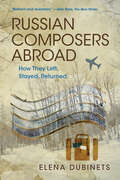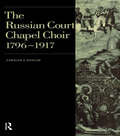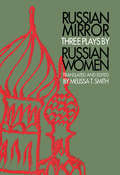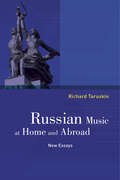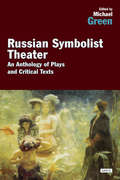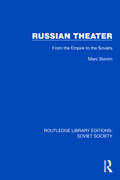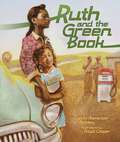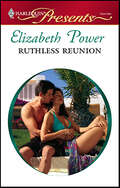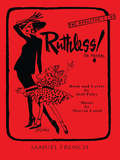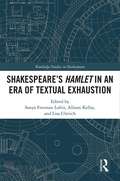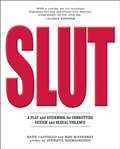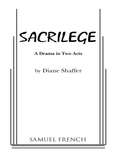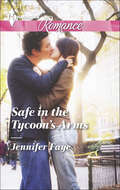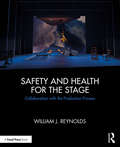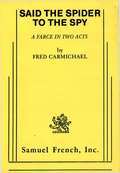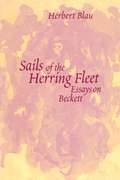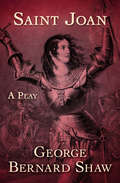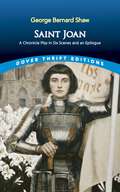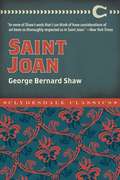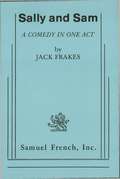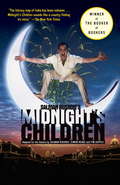- Table View
- List View
Russian Composers Abroad: How They Left, Stayed, Returned (Russian Music Studies)
by Elena DubinetsAs waves of composers migrated from Russia in the 20th century, they grappled with the complex struggle between their own traditions and those of their adopted homes. Russian Composers Abroad explores the self-identity of these émigrés, especially those who left from the 1970s on, and how aspects of their diasporic identities played out in their music. Elena Dubinets provides a journey through the complexities of identity formation and cultural production under globalization and migration, elucidating sociological perspectives of the post-Soviet world that have caused changes in composers' outlooks, strategies, and rankings. Russian Composers Abroad is an illuminating study of creative ideas that are often shaped by the exigencies of financing and advancement rather than just by the vision of the creators and the demands of the public.
Russian Court Chapel Choir: 1796-1917 (Music Archive Publications)
by Carolyn C. DunlopFirst Published in 2000. Routledge is an imprint of Taylor & Francis, an informa company.
Russian Culture and Theatrical Performance in America, 1891–1933
by Valleri J. HohmanBetween the 1890s and the 1930s, advancements in communication and travel encouraged widespread international cultural exchange, and Americans increasingly came into contact with Russian culture and theatrical performance. A number of factors, including emigration from Russia, world war, revolutionary activities in both Russia and the United States, and developments in modernism in the American theatre influenced the way those performances were received by American artists and audiences. Examining the work of impresarios, financiers, and the press as well as the artists themselves, Hohman demonstrates how a variety of Russian theatrical styles were introduced and incorporated into American theatre and dance.
Russian Mirror: Three Plays by Russian Women (Russian Theatre Archive Ser. #Vol. 14.)
by Melissa T. SmithThe three playwrights presented together in this volume On the Road to Ourselves), Elena Gremina (Behind the Mirror) and Olga Mikhailova (Russian Dream). The selected plays contain many elements which will appeal to Western directors and audiences: well-drawn characters, engaging plots, lively wit. Central to the three plays selected in this volume is a complex interaction of Russian and Western value systems, a theme that becomes increasingly relevant for Russian audiences with each passing season and no less relevant for Europeans and Americans.
Russian Music at Home and Abroad: New Essays
by Richard TaruskinThis new collection views Russian music through the Greek triad of "the Good, the True, and the Beautiful" to investigate how the idea of "nation" embeds itself in the public discourse about music and other arts with results at times invigorating, at times corrupting. In our divided, post–Cold War, and now post–9/11 world, Russian music, formerly a quiet corner on the margins of musicology, has become a site of noisy contention. Richard Taruskin assesses the political and cultural stakes that attach to it in the era of Pussy Riot and renewed international tensions, before turning to individual cases from the nineteenth century to the present. Much of the volume is devoted to the resolutely cosmopolitan but inveterately Russian Igor Stravinsky, one of the major forces in the music of the twentieth century and subject of particular interest to composers and music theorists all over the world. Taruskin here revisits him for the first time since the 1990s, when everything changed for Russia and its cultural products. Other essays are devoted to the cultural and social policies of the Soviet Union and their effect on the music produced there as those policies swung away from Communist internationalism to traditional Russian nationalism; to the musicians of the Russian postrevolutionary diaspora; and to the tension between the compelling artistic quality of works such as Stravinsky’s Sacre du Printemps or Prokofieff’s Zdravitsa and the antihumanistic or totalitarian messages they convey. Russian Music at Home and Abroad addresses these concerns in a personal and critical way, characteristically demonstrating Taruskin’s authority and ability to bring living history out of the shadows.
Russian Symbolist Theater: An Anthology of Plays and Critical Texts
by Michael GreenThis one-of-a-kind volume, superbly edited and translated by Michael Green, presents the most important works of the Russian Symbolist theatre--both plays and critical essays. <P><P> Although by writers better known for their verse and narrative prose, the plays of the Symbolists were not intended, like the dramatic poems of the Romantics, for the study rather than the stage. Instead, they are highly theatrical creations in a new style that demanded a new style of production. Meyerhold played a decisive role in the new Symbolist theatre and it was his production of Blok's The Puppet Show in Komissarzhevskaya's Theatre that launched the new direction in Russian drama.Among the works collected here are the plays The Puppet Show and The Rose and the Cross (Blok), The Triumph of Death (Sologub), The Comedy of Alexis and The Venetian Madcaps (Kuzmin), Thamyris Kitharodos (Annensky), and The Tragedy of Judas (Remizov) and essays by Briusov, Blok, Ivanov, Bely, Sologub, and Andreyev. Rounding out this essential anthology are Michael Green's general introduction, as well as insightful prefaces for each writer, placing the plays and essays into their cultural and historical contexts.
Russian Theater: From the Empire to the Soviets (Routledge Library Editions: Soviet Society)
by Marc SlonimRussian Theater (1963) is a comprehensive study of the main trends in Russian theatre in the nineteenth and twentieth centuries. Beginning with its origins in pagan folklore and ritual, it goes on to consider the romantic drama which flourished in the first half of the nineteenth century, the realistic drama of Gogol, Turgenev and their contemporaries, and the beginning of the modernist movement. The foundation of the famous Moscow Art Theatre in 1898 by Stanislavsky and Danchenko led to a remarkable period of innovation in acting, production and stage design which still influences the theatre of the West. Their association of Chekhov and their production of his plays is fully described. The reader is also introduced to the work of such playwrights as Andreyev and Gorky, and to the experiments and ideas of directors like Meeyerhold, Tairov and Vakhtangov. A large part of the book is devoted to a systemic analysis of plays and trends under the Soviets and the rise and fall of the avant-garde theatres and the reasons for their replacement by conservative realism.
Russians in Britain: British Theatre and the Russian Tradition of Actor Training
by Jonathan PitchesFrom Komisarjevsky in the 1920s, to Cheek by Jowl’s Russian ‘sister company’ almost a century later, Russian actor training has had a unique influence on modern British theatre. Russians in Britain, edited by Jonathan Pitches, is the first work of its type to identify a relationship between both countries’ theatrical traditions as continuous as it is complex. Unravelling new strands of transmission and translation linking the great Russian émigré practitioners to the second and third generation artists who responded to their ideas, Russians in Britain takes in: Komisarjevsky and the British theatre establishment. Stanislavsky in the British conservatoire. Meyerhold in the academy. Michael Chekhov in the private studio. Littlewood’s Theatre Workshop and the Northern Stage Ensemble. Katie Mitchell, Declan Donnellan and Michael Boyd. Charting a hitherto untold story with historical and contemporary implications, these nine essays present a compelling alternative history of theatrical practice in the UK.
Ruth and the Green Book
by Calvin A. RamseyRuth and the Green Book is the story of one black family's trip from Chicago to Alabama by car in the late 1940s. Along the way they encounter prejudice, but they also discover The Green Book, a real guide to accommodations which was published for decades to aid African-American travelers as they faced prejudice on the roads across the country.
Ruthless Reunion
by Elizabeth PowerOnly passion can unlock the secrets of the past…When handsome Alex Sabre recognizes her, Sanchia realizes that they must have once known each other intimately. But Sanchia has amnesia—her mind has rejected three years of painful memories. Sanchia knows that to unlock her secret past she must spend time with the rich and ruthless Alex….But Alex won't tell her what she needs to know—or why he's resisting the passionate sensual pull between them. What was he to her? What is he hiding? And what happens when Sanchia learns the truth about the man she's falling in love with...again?
Ruthless!
by Joal Paley Marvin LairdMusical spoof . Book and Lyrics by Joal Paley. Music by Marvin Laird. . Characters: 1 male, 5 female or 6 female. Unit set. . Eight year old Tina Denmark knows she was born to play Pippi Longstocking and she will do anything to win the part in her school musical. Anything includes murdering the leading lady! This aggressively outrageous musical hit garnered rave reviews during its long Off Broadway run which opened with Brittany Spears in the title role. . "A spoof that has enough absurd plot twists and multiple identities to fill several old movies.... The fun comes from the sheer brazenness!"--- N.Y. Times. . "Hilarious.... It is beyond praise!"-- N.Y. Daily News. . "Wild amusement."-- N.Y. Post. . "A demented pleasure. Cheery, cheeky burlesque humor that evokes Your Show of Shows."-- N.Y. Newsday. . "Merry mayhem.... Malicious, delicious and a total joy."-- N.Y. Observer. . "Brilliant."-- USA Today. . "A wonderfully smart and funny send up of every Broadway brat from Gypsy to The Bad Seed ... loaded with campy wit and charm."-- Variety.
Réquiem por una mujer
by William FaulknerUna de las novelas capitales de Faulkner sobre la culpa y el destino, inspiradora de la adaptación teatral de Albert Camus.En esta novela que retoma los personajes de Santuario, el matrimonio de Temple Drake y Gowan Stevens sufre una pérdida intolerable: su hija pequeña es asesinada por su niñera, a la que luego se condena a muerte. Sin embargo, poco antes de que se cumpla la sentencia Temple buscará interceder por la muchacha. Y es que no solo está en juego la administración de la justicia, sino también la culpa histórica de toda una sociedad fundada en tierra hostil y manchada por la violencia. Contada por turnos en una prosa desbordante y como obra de teatro, Réquiem por una mujer es una inquietante exploración del impacto del pasado en el presente.
SHAKESPEARE’S HAMLET IN AN ERA OF TEXTUAL EXHAUSTION (Routledge Studies in Shakespeare)
by Sonya Freeman Loftis Allison Kellar Lisa Ulevich"Post-Hamlet: Shakespeare in an Era of Textual Exhaustion" examines how postmodern audiences continue to reengage with Hamlet in spite of our culture’s oversaturation with this most canonical of texts. Combining adaptation theory and performance theory with examinations of avant-garde performances and other unconventional appropriations of Shakespeare’s play, Post-Hamlet examines Shakespeare’s Hamlet as a central symbol of our era’s "textual exhaustion," an era in which the reader/viewer is bombarded by text—printed, digital, and otherwise. The essays in this edited collection, divided into four sections, focus on the radical employment of Hamlet as a cultural artifact that adaptors and readers use to depart from textual "authority" in, for instance, radical English-language performance, international film and stage performance, pop-culture and multi-media appropriation, and pedagogy.
SLUT
by Jennifer Baumgardner Carol Gilligan Katie Cappiello Meg Mcinerney"SLUT is truthful, raw, and immediate! Experience this play and witness what American young women live with everyday."--Gloria SteinemRemember the slut at your school? Whether used as a slur or reclaimed as an expression of sexy confidence, this word has been used as an acceptable excuse for rape, bullying, and the sexual double standard. In the spirit of The Vagina Monologues, this riveting, critically acclaimed play, written in collaboration with New York City high school students, sheds light on enduring feminist issues. The play is accompanied by production notes, a guide for talk-backs, and provocative essays by Carol Gilligan, Jennifer Baumgardner, and Jarrod Chin of Mentors in Violence Prevention (MVP), among others, providing the resources to inspire change within our communities and ourselves.Katie Cappiello and Meg McInerney are the creative director and managing director of the revolutionary feminist acting school The Arts Effect. In their ten years of teaching, they have brought theater arts programming to public, private, and special education schools worldwide. Their work has been hailed by Secretary of State Hillary R. Clinton, Gloria Steinem, Eve Ensler, Kathy Najimy, Congresswoman Carolyn Maloney, Tina Fey, and Amy Poehler, and they have been honored by The National Women's Hall of Fame and The United States Congress for their dedicated, cutting-edge work empowering young girls.Jennifer Baumgardner is the executive director of The Feminist Press at CUNY as well as an author, activist, and filmmaker.
Sacrilege: A Drama in Two Acts
by Diane ShafferEllen Burstyn starred on Broadway in this riveting drama about a devout Roman Catholic nun who fights the Vatican to allow women in the priesthood. Sister Grace befriends Ramon, a homeless hustler, and restores his faith in himself, the Church and God. Eventually Ramon becomes a priest while Grace gains national notoriety challenging conservative Church doctrine. To silence her, the Vatican holds a hearing based on trumped up charges and Father Ramon must testify against her. Presiding over the hearing is Grace's old friend and mentor, Cardinal King, a former political activist and "street priest" who is now an advisor to the Pope. Grace is found guilty and expelled from her order. Her expulsion forces the main characters to re examine the meaning of faith, spiritual violence and the redeeming grace of God.
Safe in the Tycoon's Arms
by Jennifer FayeThe man behind the headlines... When billionaire Lucas Carrington returns to his New York mansion, he never expects to find beautiful stranger Kate Whitley making herself at home. Invited by his aunt to stay, he soon discovers she's a woman in need. She's raising funds for her sick daughter, so he agrees to let her stay-temporarily! Kate may not belong in Lucas's high-society world, but she sees there is more to this tycoon than the headlines suggest. Yet with so much at stake, can she trust herself and her heart with New York's most sought-after bachelor?
Safety and Health for the Stage: Collaboration with the Production Process
by William J. ReynoldsSafety and Health for the Stage: Collaboration with the Production Process is a practical guide to integrating safety and health into the production process for live entertainment in the context of compliance with applicable codes, standards, and recommended practices. This book explores the need for safety and health to become an integral aspect of theatre production and live entertainment, focusing on specific steps to take and policies to employ to bring a safety and health program into full collaboration in the production process. Readers will learn how to comply with legal codes and standards as they initiate and implement an effective safety and health program in their theatre production organization or academic theatre department. The book includes references and links to other industry-specific safety and health resources, as well as a Glossary of Safety and Health Terms to navigate the safety and health jargon in the context of theatre and live entertainment. Safety and Health for the Stage: Collaboration with the Production Process provides links to electronic versions of sample safety and health programs, industry-specific policies and recommended practices, and forms and templates related to many of the topics covered in the book. Written for practitioners who are engaged in all aspects of theatre production and live entertainment, as well as educators who train and influence the next generations of these practitioners, this book is an essential resource for creating a positive culture of safety in live entertainment.
Said the Spider to the Spy
by Fred CarmichaelFarce / 4m, 5f / Augusta Waycross borrows the identity and the Florida beach home of her friend, a best selling romance author, touching off one of the funniest mistaken identities comedies ever written. A cache of Colombian heroin is left in the house by missing guest, attracting various characters to the location. A detective passes out after mistakenly overdosing on sleeping pills and drowsily awakes thinking he's Adele's husband, but so does a mysterious young man who keeps calling the Missing Persons Bureau to find out who he is. Augusta and a friend try to catch the drug king pin, but the real Adele arrives and finds herself surrounded by men claiming to be her husband. Then, her husband shows up with and an odd couple from the women's club. Scene after hilarious scene culminate in revelations: who are these people and why are they pretending to be someone else. The characters ages can be varied to suit any audience.
Sails of the Herring Fleet
by Herbert BlauSails of the Herring Fleet traces esteemed director and theorist Herbert Blau's encounters with the work of Samuel Beckett. Blau directed Beckett's plays when they were still virtually unknown, and for more than four decades has remained one of the leading interpreters of his work. In addition to now-classic essays, the collection includes early program notes and two remarkable interviews -- one from Blau's experience directing Waiting for Godot at San Quentin prison, and one from his last visit with Beckett, just before the playwright's death. Herbert Blau is Byron W. and Alice L. Lockwood Professor of the Humanities, University of Washington.
Saint Joan: A Play (Penguin Classics Ser.)
by George Bernard ShawThe great Irish playwright&’s impassioned dramatization of the life and trial of Joan of Arc. Three years after Joan of Arc was canonized in 1920, George Bernard Shaw brought to the stage a more complex and human portrayal of the fifteenth-century French martyr, creating one of the theater&’s most memorable and enduring female roles. Already renowned for plays such as Pygmalion, The Arms and the Man, and Major Barbara, Shaw presented Saint Joan as &“A Chronicle Play in Six Scenes and an Epilogue.&” The play begins in February 1429 as a visionary peasant girl feels called to lead a French army against the English in the Hundred Years War in order to install Charles VII, the dauphin, to the throne. Rallying the troops, Joan plays a pivotal role in the siege of Orléans and in the crowning of Charles at Reims Cathedral. The play culminates with Joan&’s trial for heresy after she is captured by opposing forces and ultimately condemned and burned at the stake. Through the device of an epilogue, Shaw dramatizes the reevaluation of Joan through a retrial a quarter century after her execution that clears her of heresy to declarations of her as a Christian martyr and ultimately almost five centuries after her death, her canonization as a saint. Shaw&’s Joan is an upstart and a rebel—sane, self-assured, proud, courageous, but still with the naivete of the teenager she was—who challenged the conventions of her time as well as those in power. Having exhaustively researched the documents of her trial, Shaw added a preface and series of reflections on Joan to the published text of the play, which offer further insight into a legendary figure who continues to fascinate, intrigue, and provoke a myriad of interpretations, as well as ongoing productions of Shaw&’s only tragedy. This ebook has been professionally proofread to ensure accuracy and readability on all devices.
Saint Joan: A chronicle play in six scenes and an epilogue (Dover Thrift Editions)
by George Bernard ShawHailed by T. S. Eliot as "a dramatic delight," George Bernard Shaw's only tragedy traces the life of the peasant girl who led French troops to victory over the English in the Hundred Years' War. An avid socialist, Shaw regarded his writing as a vehicle for promoting his political and humanitarian views and exposing hypocrisy. With Saint Joan, he reached the height of his fame, and it was this play that led to his Nobel Prize in Literature for 1925. In the six centuries since her martyrdom, Joan of Arc has inspired artists, musicians, and writers. Shaw's heroine is unlike any previous interpretation — not a witch, saint, or madwoman but a pre-feminist icon, possessed of innate intelligence and leadership qualities that challenge the authority of church and state. She is also a real human being, warm and sincere, whose flaws include an obstinacy that leads to her undoing. This edition includes a substantial, informative Preface by the author.
Saint Joan: Her History And The Play (Clydesdale Classics)
by George Bernard ShawRediscover the story of the inspirational Saint Joan of Arc with the classic play by George Bernard Shaw. The historical saint begins her story as a simple country girl in fifteenth century France who is inspired by visions from God to help liberate her country from the English. She secures soldier&’s clothing and convinces the soon-to-be king, Charles, to begin battling for his country. Though her regiment succeeds in battle after battle, her enemies (the English) move against her. When Joan moves to liberate Paris from the English control—against the advice of her friends—she is captured and tried for heresy. Despite help from a Bishop and the Inquisitor, who truly want to see Joan succeed, her beliefs simply do not match with the Church; people do not hear visions from God, only from the church, therefore Joan must be possessed by demons. Subsequently, Joan is sentenced to death. Now read this beautiful new edition of the talented George Bernard Shaw&’s play, Saint Joan. Discover why the Catholic Church made this young woman into one of the most famous saints known today.
Sally And Sam
by Jack FrakesComedy / 5m, 8f / Interior / From morning to late the same night Sally and Sam are seen at home with parents, in class, after school with fellow students, and finally with each other at the football game and in Sam's car. Inner thoughts, hopes, fears and rebellions are humorously expressed by their Psyches. Realism is blended with theatrical devices such as area lighting and staging, choral chants and optional use of projected slide images.
Salman Rushdie's Midnight's Children: Reader's Guide
by Salman RushdieIn this Readers' Guide, David Smale traces the critical reception of this fascinating writer by examining the changing responses to his two best-known works. As a novelist and icon, Rushdie has embraced both 'popular' and 'high' culture; reflecting this, the Guide brings together both academic criticism and journalism to investigate the passions and preoccupations of Rushdie's many critics, steering the reader through the inflamed debates and rhetoric surrounding this much admired but controversial author.
